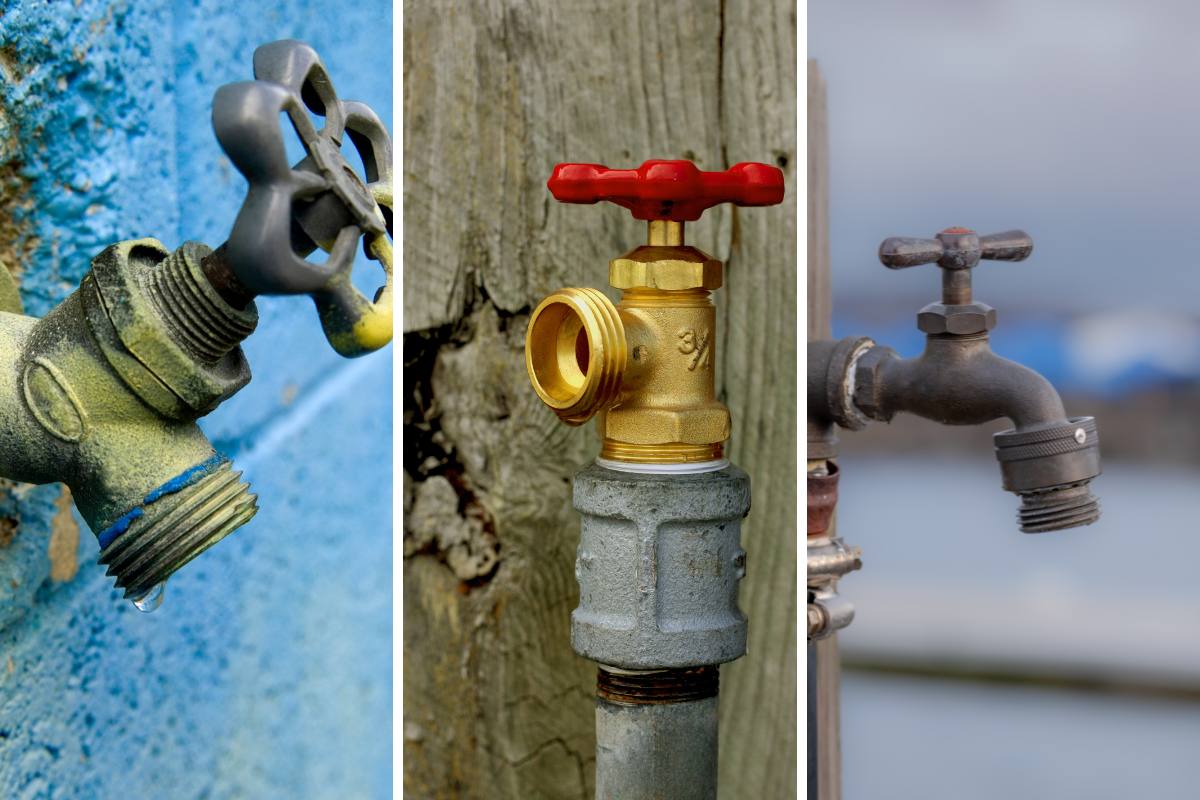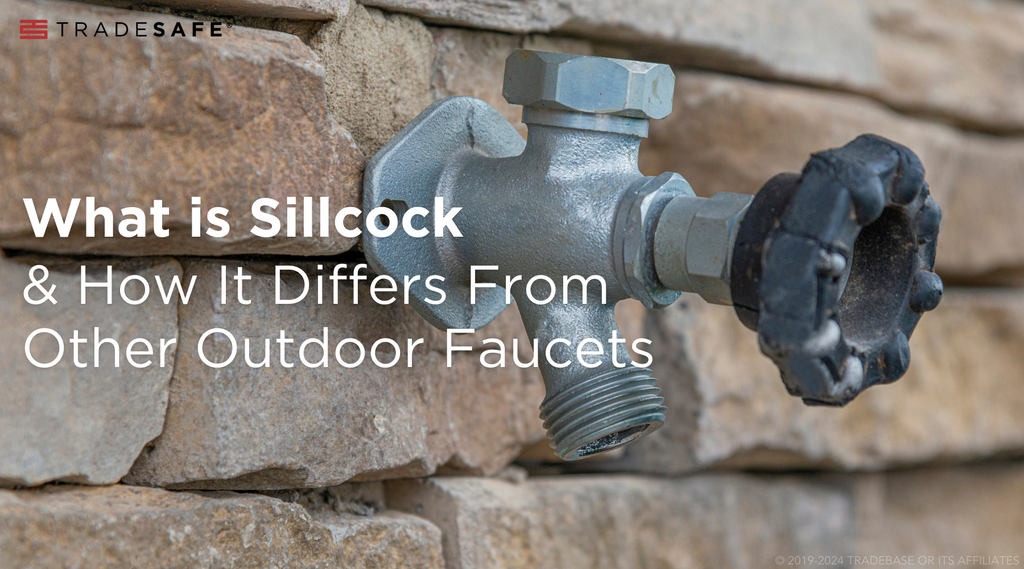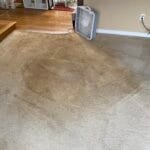Ever found yourself confused about the difference between a Silcock and a Hose Bib? You’re not alone.
These two terms are often used interchangeably, leading to a lot of confusion when you’re trying to tackle home maintenance or a DIY plumbing project. Understanding the distinction can save you time, money, and prevent future headaches. Imagine the satisfaction of confidently choosing the right fixture for your home, knowing that you’ve made an informed decision.
We’ll unravel the mysteries behind Silcocks and Hose Bibs, providing you with the clarity you need. Keep reading to discover how this small piece of knowledge can make a big difference in your plumbing projects.
Silcock Basics
A silcock is a common outdoor plumbing fixture. It connects the indoor water supply to the outside. The design helps in managing water flow for various tasks. People often mistake silcocks for hose bibs, though they differ. Understanding the basics of a silcock can help in choosing the right tool for your needs.
Design And Function
The silcock has a long pipe, extending through the wall. This design prevents freezing in cold weather. It usually has a handle to control the water flow. The water flows through a valve inside, staying warm. This way, the silcock works even in winter without freezing.
Material And Build
Most silcocks are made of brass. Brass is durable and resists rust. Some may be made of stainless steel or plastic. These materials ensure the silcock lasts for many years. The quality of materials affects the performance and lifespan. Always check the material before buying.
Common Uses
Silcocks are used for outdoor watering tasks. They connect hoses for garden watering. They fill pools or wash cars. People also use them for outdoor cleaning. The silcock provides easy access to water outside the home. It is a crucial fixture in regions with cold weather.

Credit: organicagcentre.ca
Hose Bib Essentials
Understanding hose bib essentials helps in selecting the right outdoor faucet. A hose bib, often confused with a silcock, is a crucial plumbing component. It’s designed to control water flow for gardening, cleaning, and other outdoor tasks. Knowing its design, material, and common uses ensures optimal water management.
Design And Function
The hose bib features a simple yet effective design. It consists of a threaded spout that connects to garden hoses. A valve regulates water flow, allowing precise control. Typically, its handle is easy to turn, ensuring smooth operation. The design focuses on ease of use and durability.
Material And Build
Hose bibs come in various materials like brass, stainless steel, and plastic. Brass offers strength and resists corrosion. Stainless steel provides durability but may be costlier. Plastic is lightweight and affordable but less sturdy. Selecting the right material affects longevity and performance.
Common Uses
Hose bibs serve multiple outdoor needs. They’re ideal for watering gardens and washing cars. They assist in filling pools and cleaning patios. Some use them for pressure washing driveways. Their versatility makes them a household necessity.
Installation Differences
Understanding installation differences between silcock and hose bib is crucial. These outdoor faucets might appear similar but have distinct installation needs. Knowing the tools, process, and challenges helps ensure a smooth setup. Each step requires attention to detail for lasting performance.
Tools Required
Installing a silcock demands specific tools. A wrench and pipe cutter are essential. Plumber’s tape and sealant ensure a tight fit. For hose bibs, you’ll need a wrench and screwdrivers. Sealant and washers are crucial for preventing leaks. Having the right tools simplifies the job.
Process Overview
Silcock installation involves cutting pipes first. After cutting, attach the silcock to the pipe. Use plumber’s tape for a secure fit. Hose bib installation starts by securing it to the house. Use screws to fix it firmly. Apply sealant to prevent water leaks. Both processes need careful alignment.
Challenges And Solutions
Installing a silcock often faces pipe alignment issues. Ensuring the pipe fits snugly prevents leaks. Hose bibs may face wall mounting challenges. Using the right screws and anchors secures the bib. Leaks can occur if sealant is not applied correctly. Ensuring tight connections is key.

Credit: trdsf.com
Maintenance Tips
Maintaining outdoor faucets, whether they are silcocks or hose bibs, is crucial for preventing leaks and ensuring longevity. Both types serve as a vital gateway for your garden hoses, but they require a bit of attention to function efficiently. Here are some practical maintenance tips that can keep your outdoor faucets running smoothly and prevent costly repairs.
Regular Checks
Make it a habit to inspect your silcock or hose bib every season. Look for any signs of rust, cracks, or leaks. Regular checks can help you spot potential issues before they turn into bigger problems.
During your inspection, turn the faucet on and off to ensure it’s working smoothly. If you notice any stiffness or unusual sounds, it might be time for a closer look.
Don’t forget to check the washers and gaskets. These small components can wear out over time and are a common source of leaks.
Repair And Replacement
If you find a leak, it’s often due to a worn washer or gasket. Replacing these can be a quick and inexpensive fix. Keep a set of spare parts handy for easy repairs.
Consider the age of your faucet. Older models might be less efficient and harder to repair. If repairs become frequent, it might be time for a replacement.
When replacing, think about the quality and material of the new faucet. Investing in a high-quality silcock or hose bib can save you money and time in the long run.
Have you ever tackled a faucet repair and discovered it was simpler than expected? Often, a little maintenance knowledge can empower you to handle these tasks with confidence. By taking care of your silcock or hose bib, you ensure a steady water supply for your garden and avoid unnecessary stress.
Performance Comparison
When choosing between a Silcock and a Hose Bib, performance is key. Both options offer unique strengths. Understanding their performance can guide your decision.
Water Flow And Pressure
Water flow and pressure matter greatly in any outdoor faucet. Silcocks usually offer more consistent water flow. They are designed to maintain pressure over long distances. This is beneficial for larger gardens or multiple hose connections. Hose bibs can vary in performance. Some models may not maintain high pressure. This can impact tasks like washing cars or watering large areas.
Durability
Durability is crucial for outdoor faucets. Silcocks are often made from brass or stainless steel. These materials ensure a longer lifespan. They resist wear and tear better. Hose bibs are also durable but may use lighter materials. This can make them more prone to damage over time. Regular maintenance can extend their life.
Weather Resistance
Weather resistance is important for outdoor use. Silcocks often have frost-proof designs. This prevents freezing in winter months. They are ideal for colder climates. Hose bibs may not offer the same level of weather protection. Insulating them in winter is necessary. This can prevent damage from cold weather.
Cost Considerations
Choosing between a silcock and a hose bib involves considering costs. Each option has different expenses. Understanding these can help you make an informed decision. This section breaks down the costs involved.
Initial Investment
Silcocks can be more expensive to install initially. They often require professional installation. This is due to their complex mechanism and design. Hose bibs, on the other hand, are simpler. They usually have a lower upfront cost. You can even install them yourself. This makes them a budget-friendly choice for many homeowners.
Long-term Costs
Silcocks are built to last in colder climates. They can prevent freezing issues. This means fewer repairs over time. Hose bibs may need more maintenance in colder areas. This can lead to higher long-term costs. Also, silcocks can increase your home’s value. This potential resale benefit can offset initial expenses.

Credit: organicagcentre.ca
Frequently Asked Questions
What Is The Main Difference Between A Silcock And A Hose Bib?
A Silcock has a longer stem. It prevents freezing in cold climates.
Can Silcocks And Hose Bibs Be Used Interchangeably?
Not always. Silcocks are better for freezing conditions. Hose Bibs are for general use.
Why Are Silcocks Preferred In Colder Areas?
They extend inside walls, keeping pipes warmer. This prevents freezing and bursting.
Do Silcocks Require Special Installation?
Yes, they need precise installation. Proper sloping is crucial to avoid water retention and freezing.
Are There Any Maintenance Tips For Hose Bibs?
Yes, remove hoses in winter. Check for leaks regularly. Tighten loose connections.
Conclusion
Choosing between silcock and hose bib depends on your needs. Silcock is great for outdoor, cold climates. Hose bib fits well in warmer areas. Consider installation ease and maintenance. Both options offer reliable water access. Check compatibility with your plumbing system.
Costs vary, so budget matters. Think about durability and convenience. Each has unique features worth considering. Explore options before deciding. Your choice impacts home water management. Prioritize functionality and quality. Make an informed decision for your home. Proper selection ensures effective water use.
Enjoy hassle-free water access year-round. Your home deserves the best solution.





